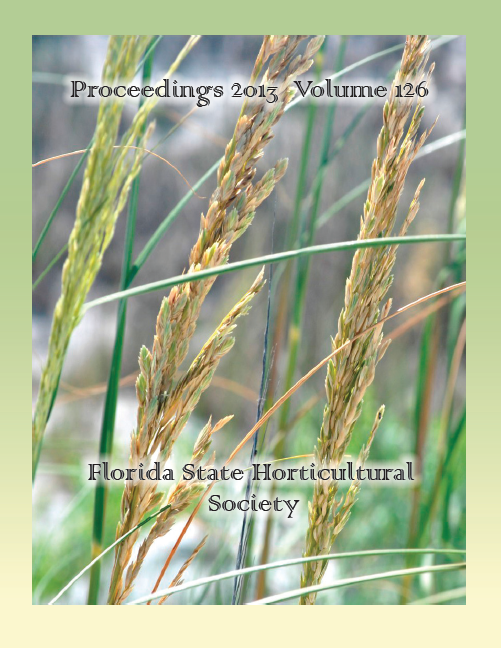Transgenic Expression in Citrus of Vitis MybA1 from a Bidirectional Promoter Resulted in Variable Anthocyanin Expression and Was Not Suitable as a Screenable Marker without Antibiotic Selection
Abstract
Transgenic strategies offer potential solutions for major problems facing Florida citrus. Intragenics, in which all transgene components are from the target species’ gene pool, may alleviate consumer concerns and might also facilitate deregulation, providing growers with consumer-accepted transgenic solutions more quickly. Resistance to antibiotics is typically used as a selectable marker for plant transformation and this project was initiated as a proof of concept to test a plant gene as a visual screenable marker alternative to antibiotic-resistance. Transformation with Vitis MybA1 has been demonstrated to produce purple shoots in grape and was tested as a surrogate for a citrus Myb that might be used as an intragenic plant-pigmentation marker in citrus transformation. ‘Hamlin’ and Carrizo epicotyls segments were exposed to A. tumefaciens EHA105 containing the DAT or DEAT vector with Vitis MybA1 driven by the D35S promoter and neomycin phosphotransferase II (NptII, conferring kanamycin resistance, originally isolated from E. coli), driven by the Nos promoter. Transformation was compared with and without kanamycin (100 mg·L–1= 0.00083 lb/gal) in the shoot regeneration medium with the DEAT vector. In sum, over 16 separate experiments, more than 1300 explants each of Carrizo and ‘Hamlin’ were treated. In all cases, 6–20 fold more shoots resulted when kanamycin was excluded from the medium, since there was no negative selection against non-transformed shoots, but no shoots with red pigmentation were recovered. When kanamycin was included, 28% of resulting ‘Hamlin’ shoots (6 out of 21) and 57% of Carrizo shoots (321/405) displayed anthocyanins. Phenotypes recovered included plants with blotchy reddish leaves and plants with cupped leaves. Pigmented ‘Hamlin’ shoots were very weak and subsequently died. Several deep red Carrizo transformants resulted with potential as research tools and ornamentals.

